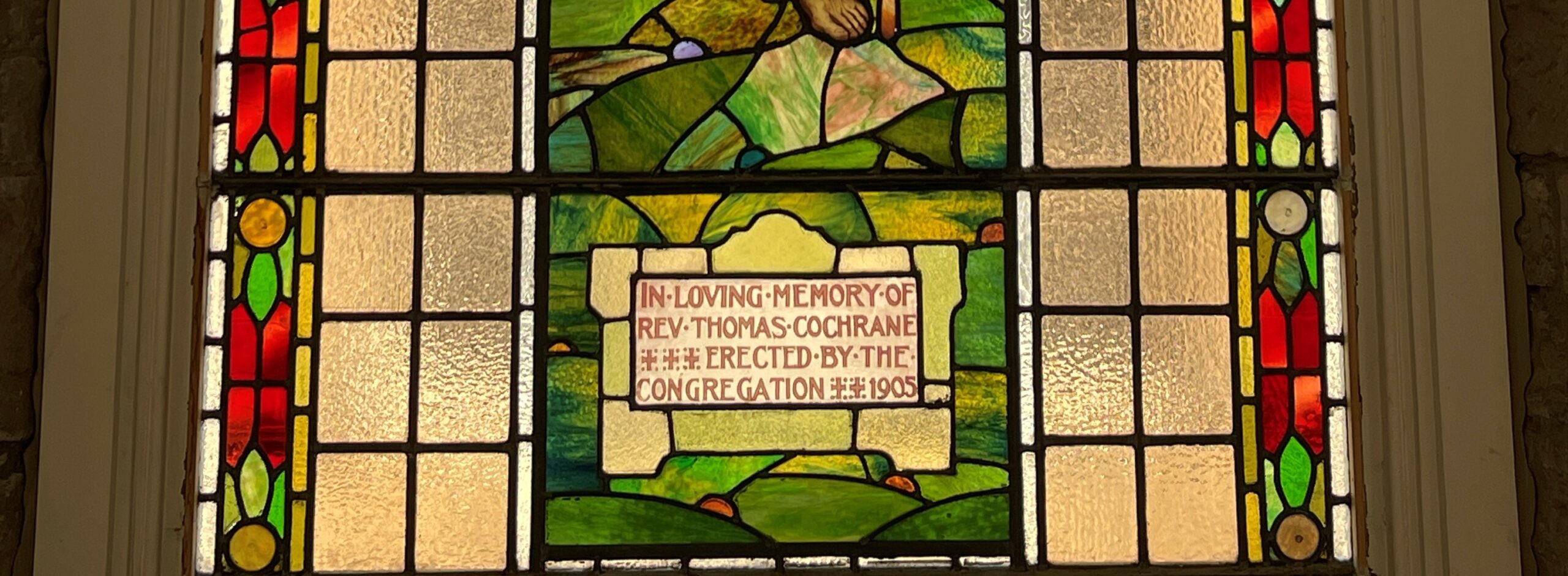Soon after the Disruption, amongst other parts of the city, mission work was begun in the Cowgate district lying in the valley 200 yards to the north of South College Street. This was initially conducted by members of the congregation of the New North Free Church and culminated in a congregation being formed in 1853, centred on St Mary’s Chapel. Seven years later, a church of Gothic design and seating 570, also designed by Patrick Wilson, the architect of the South College Street Church, was opened at a cost of £2,400. The missionary to the original congregation, Rev. John Pirie, became the minister to the new church.
In 1877, the congregation found itself decanted to the Music Hall in Chambers Street (now the site of Adam House). Their church had fallen into a critical state of repair due to an accumulation of debris behind the building resulting from the demolition of buildings around them in the formation of Guthrie Street. During the course of the remedial work, the church was lengthened to provide for an additional 150 seats. Plans were also set into motion to add various ancillary halls and rooms. Not long after the work was completed and the church rededicated, Pirie accepted a call to a church in Norwich. He was succeeded by the Rev. Charles Wedderburn from Stirling West Free Church.
At about the same time as the mission in the Cowgate, mission work was also begun in the area of the Pleasance by St John’s Free Church under the direction of Dr. William Hanna. Initially, the school at St John’s Hill provided accommodation for religious services until Pleasance Free Church was built in 1859. The Free Church General Assembly sanctioned a charge in the same year and in 1860, Thomas Cochrane (who had been the missionary in the area since 1852) was ordained and appointed to the charge.
In order to gain additional room for their flourishing activities, in 1873 the congregation bought and moved to the Independents’ Church in Richmond Place which had been vacated by the Independents on their move to Hope Park. The original Pleasance church buildings were then used for a period for continuing mission work until they were sold to form the nucleus for the New College Settlement. Rev. Thomas Cochrane remained minister until his retirement in 1896. He is commemorated in the stained glass window. There was also a commemorative tablet but its location is unknown.

In 1860, Cowgate and Pleasance had congregational rolls numbering 177 and 254 respectively. By 1900, these numbers had reached 840 and 860. Despite the auspicious beginnings and the great popularity of the preachers at both charges, the impetus began to leave them soon after the tum of the century. By comparison, at South College Street, the decline had started earlier. Between 1865 and 1900, its numbers dropped from 1,400 to 650, probably due to the expansion of the city and the movement of the population to the more attractive environments to be found in the developing suburbs.
The declining membership of three churches – South College Street, and the Free churches on the Cowgate and the Pleasance – meant that they were soon united together into one congregation in 1910 and used the South College Street building. The new congregation was renamed the Union United Free Church and stayed in the building from 1910 till the summer of 1961.
On 5th June 1961, the congregation transported to its new parish in the fast-developing area of Muirhouse, though it was not until two years later that the foundation stone was to be laid for their new permanent home, Muirhouse Church of Scotland in Pennywell Gardens.
The building on South College Street was purchased by the University of Edinburgh, which at the time was going through a period of significant expansion. At this point the history of religious activity in the building came to an end.

